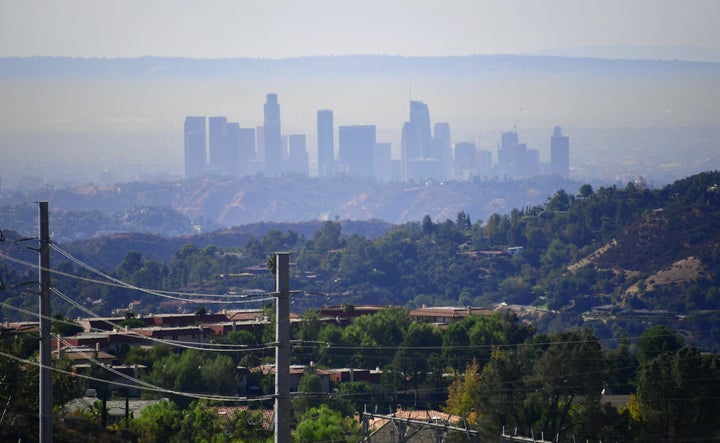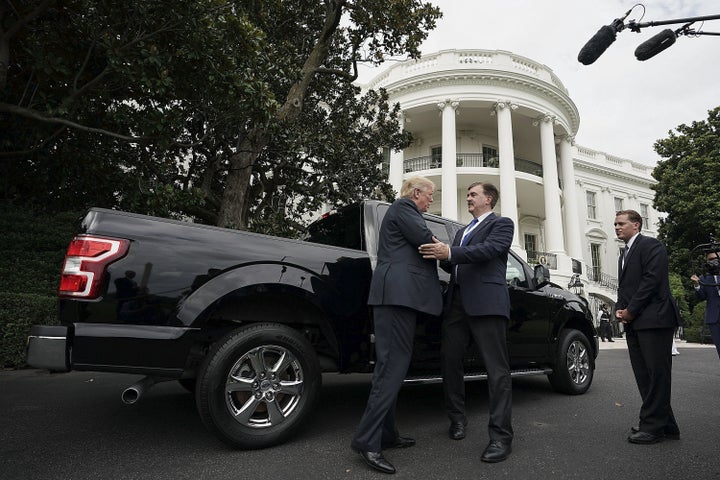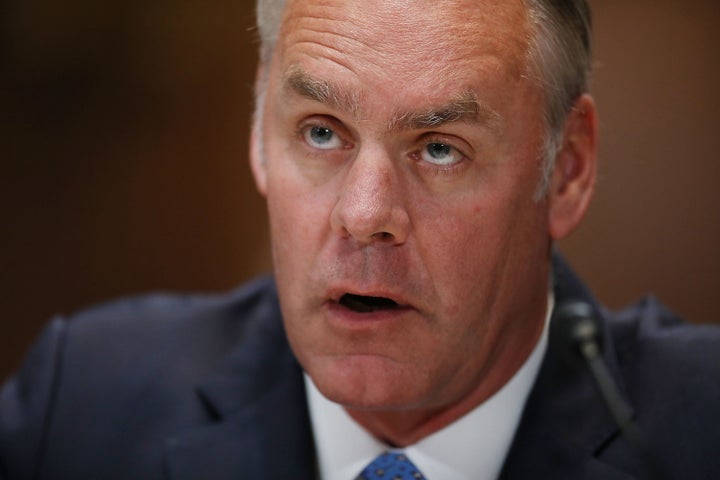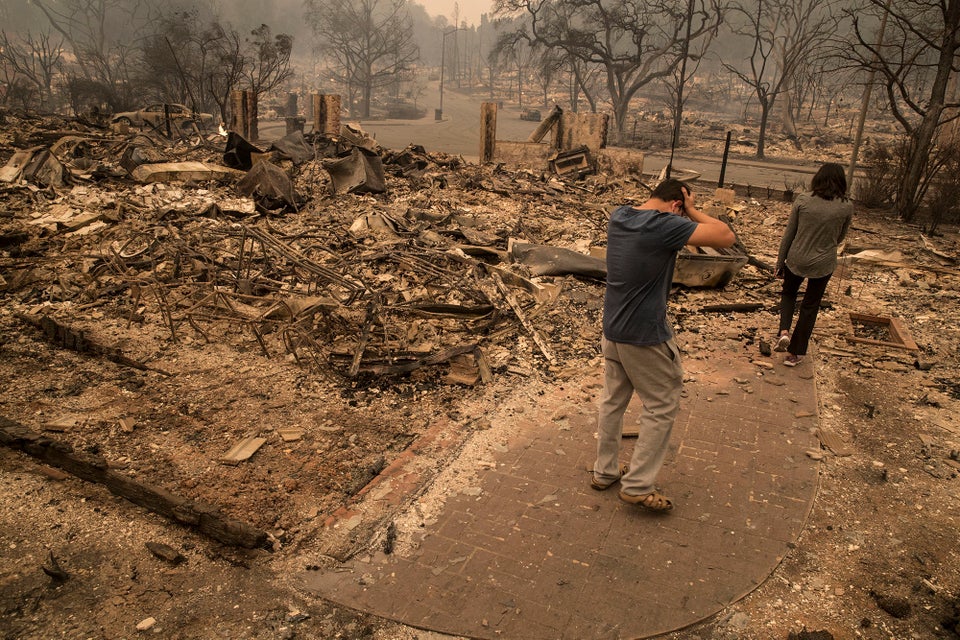
In February 2016, Republicans prevailed over a regulation a top GOP coal advocate once called the “death of federalism” when the Supreme Court granted a stay blocking President Barack Obama’s Clean Power Plan. The move handed a victory to the oil and coal industries who, backed by their patrons in 27 Republican-dominated states, had sued in what Republican House Leader Kevin McCarthy called a 27-state “revolt” against “illegitimate abuse of power.”
Two years later, Republicans control every branch of the federal government, EPA leadership has passed from one of the attorneys general who led that lawsuit to a former coal lobbyist who advocated for it, and President Donald Trump is working to dismantle any regulation that stands in the way of transforming the United States into a booming petrostate ― even if that means trampling on states’ rights in the process.
On Thursday, Trump administration launched its most ambitious assault on state environmental regulations yet with a proposal to revoke the federal waiver that lets California set stricter automobile pollution standards than the rest of the country ― a rule that 13 other states follow. The move came as part of the White House’s announcement of a plan to gut an Obama-era rule requiring vehicles sold in the U.S. to double their fuel mileage by 2025, a plan that would have slashed oil consumption by an estimated 12 billion barrels. Without the rule, the American vehicles are expected to spew an additional 600 million metric tons of carbon dioxide into the atmosphere by 2030 ― equivalent to the entire annual emissions of Canada.
“There’s not an ideological push here, there’s just, ‘We’re going to do whatever industry wants, and if Obama did anything, it’s bad and we’ll undo it,’” Christine Todd Whitman, the EPA administrator under former President George W. Bush from 2001 to 2003, said in a phone interview. “I don’t think the president has thought through what used to be a basic principle of Republicans, and that’s states’ rights.”
The so-called California waiver has generated little controversy since Congress enshrined the exception in the Clean Air Act of 1970.
Eight of the nation’s 10 most polluted cities are in California. The main problem in the state is ground-level ozone, better known as “smog,” which is created by chemical reactions between nitrogen oxide and volatile organic compounds emitted from factories, power plants and vehicle. In the 1950s, scientists found the sun-soaked, enclosed topography of Los Angeles made California’s biggest metropolis a perfect storm for smog. In a populous state where the auto industry had helped cripple nascent public transit in the 1940s, a growing number of cars worsened the asthma-triggering haze.
Every few years, California requests a Clean Air Act waiver to allow it to set stricter limits on nitrogen oxide and other pollutants that contribute to this smog. Of the 110 times California applied for its waiver, the EPA has granted it 109 times.

The only rejection came in 2007, when, months after the Supreme Court ruled in the landmark Mass. v. EPA case that the federal government could regulate carbon dioxide as a pollutant under the Clean Air Act, California requested the right to regulate tailpipe emissions. In December 2007, the Bush administration EPA denied the waiver, and California sued.
The Obama administration granted the waiver two years later. But that created a new problem for automakers, who argued they would be forced to produce one set of cars for California and another for the rest of the county. In 2012, the Obama administration announced a grand compromise: it would double the federal fuel economy standard by 2025 and require vehicles to average 54.5 miles per gallon, thus creating a national standard in line with California. The Golden State didn’t get all it wanted, as the federal government declined to set targets for zero-emissions electric vehicles, but automakers feted the agreement as a happy medium.
Given the roughly 264 million vehicles registered in the U.S., that policy amounted to “the biggest single step any nation has ever taken to combat global warming or save oil,” said Dan Becker, director of the D.C.-based Safe Climate Campaign’s Center for Auto Safety.
In 2013, Obama granted California’s most recent waiver, which allowed the state to require automakers to sell a certain number of low-emissions and zero-emissions vehicles. Thirteen states representing nearly 40 percent of the American auto market have now adopted California’s rules: Colorado, Connecticut, Delaware, Maine, Maryland, Massachusetts, New Jersey, New York, Oregon, Pennsylvania, Rhode Island, Vermont and Washington.
California’s other waivers would be untouched by the new Trump proposal. But the new action on Thursday argues that California’s most recent waiver undermines federal authority on fuel economy standards and fails to account for costs to automakers, meaning “it is reasonable, therefore, to consider any expected hardship that would be posed to manufacturers if EPA does not withdraw” the waiver.
“Our proposal aims to strike the right regulatory balance based on the most recent information and create a 50-state solution that will enable more Americans to afford newer, safer vehicles that pollute less,” EPA Acting Administrator Andrew Wheeler said in a statement Thursday. More realistic standards can save lives while continuing to improve the environment. We value the public’s input as we engage in this process in an open, transparent manner.”
Still, the waiver creates a conundrum for the Trump adminsitration. The White House promised a “back-to-basics” agenda at the EPA, the central tenet of which was to “return power to the states.” But those states stand in the way of upending auto regulations that threatened to weaken the oil industry’s grip on transportation.
“I don’t think the president has thought through what used to be a basic principle of Republicans, and that’s states’ rights.”
- Former EPA Administrator Christine Todd Whitman
“Threatening to revoke California’s waiver is hard to square with their stated respect for states’ having more autonomy,” said Janet McCabe, who served as the assistant administrator for the EPA’s Office of Air and Radiation until 2017. “I would say that the approach to federalism is inconsistent or selective.”
Where critics cry foul over a double standard, Trump’s supporters see these rules as further evidence of a messy federal regulatory environment. Even if carbon dioxide warms the planet, and automobiles are the biggest source of emissions in the country, the waiver was meant to provide local relief to California, the thinking goes. But reducing a gas as ubiquitous in the atmosphere as CO2 reaches far beyond that mandate, Bill Wehrum, the EPA’s air chief, said Thursday.
“What we’re talking about here is something very different, we’re talking about greenhouse gases,” he said. “We’re not talking about conventional pollutants like smog in Los Angeles.”
Nick Loris, a research fellow on energy and environmental policy at the right-wing Heritage Foundation, called the California waiver “a mangled form of federalism,” arguing that all states should have the right to set their own standards.
“What makes this so complicated is that California is the only state that gets to set its own standard and they can only go higher, meaning states like Texas can’t go lower if they believe the federal standard is too stringent,” he said in a phone interview. “This form of federalism is not a real true definition of what federalism should look like.”
Yet some efforts to deregulate environmental issues on the federal level require a selective interpretation as to what qualifies as the restoration of states’ rights. Last November, the Trump administration shrank the boundaries of two national monuments in Utah that Obama had designated during his final days in office: Bears Ears National Monument, by 85 percent, and Grand Staircase-Escalante National Monument, by half. Utah’s Republican lawmakers who had opposed the monuments as a federal land grab hailed the reduction.
But the monument designations came in response to a years-long effort by Native American tribes whose sacred cultural sites were located within the swath of southwestern wilderness. The public overwhelmingly opposed the Trump administration’s proposal to shrink the monuments, and the tribes are still fighting to restore the areas to their original size. But mining companies, including the uranium producer for which new EPA chief Andrew Wheeler lobbied until last year, wanted access to the lands.
Energy extraction also tends to trump states’ rights. In January, the Trump administration proposed a sweeping new offshore drilling plan that aimed to open huge swaths of the Arctic, Atlantic and Pacific coasts to oil exploration. The plan triggered almost immediate criticism from governors and lawmakers on the coasts, particularly East Coast Republicans who pleaded with Interior Secretary Ryan Zinke to exempt their coastlines.

Last month, state environmental regulators met in Los Angeles to discuss ways to sabotage the federal effort, including passing a law banning pipeline and other infrastructure from the three miles of waters off the shore that the state controls. New Jersey Gov. Phil Murphy (D) signed such a bill into law in April, and states like California and Washington are currently weighing similar legislation.
“States tend to hang out together, especially when it’s perceived that there’s health implications,” said Fran Pavley, a former California state senator who helped negotiate the 2012 federal fuel economy agreement.
It’s not just industries that produce fossil fuels that take precedence over states’ rights ― it’s those that burn them, too. After the EPA proposed repealing the Clean Power Plan in October, New York’s attorney general announced plans to sue the agency to halt the “irresponsible and illegal efforts to turn back the clock on public health.”
The Trump administration’s eagerness to ease regulations on power plants in coal states ignited a new debate over which state’s rights merit protection. In its refusal to impose new requirements on power plants in Pennsylvania and West Virginia, the EPA created new problems for Delaware, which, as the lowest-lying state, suffers from air pollution generated outside its borders. In January, Delaware Gov. John Carney (D) said his state would sue the Trump EPA for its failure to approve any of Delaware’s four petitions, filed between July and November 2016, seeking the EPA issue new emissions controls on upwind power plants under the Clean Air Act.
“The Clean Air Act entitles Delaware to relief from upwind pollution and the remedy we are seeking is reasonable and within EPA’s authority and responsibility to grant,” Carney said in a statement. “Delawareans deserve clean air, but our air quality is significantly impacted by pollution traveling downwind from other states.”
It’s difficult to say whether the Trump administration can legally rescind the California waiver. A report New York University School of Law released Wednesday argued the EPA lacks the legal authority to withdraw the waiver. No president has ever tried. And, according to David Driesen, an environmental law professor at Syracuse University, arguing that the state’s CO2 rules don’t meet the standards set out in the Clean Air Act is “just not a plausible argument.”
“California does have compelling and extraordinary conditions,” he said. “There are wildfires, and if the heat goes up in California, they have more severe local air pollution exacerbated by the heat, so it just doesn’t wash.”
The new EPA proposal accounts for the climate change, but notes that “EPA believes that any effects of global climate change would apply to the nation, indeed the world, in ways similar to the conditions noted in California.”
“EPA does not believe that these conditions, mentioned above, merit separate GHG [greenhouse gas] standards in California,” the proposal reads. “Rather, these effects, as previously explained, are widely shared and do not present ‘unique problems’ with respect to the nature or degree of the effect California would experience.”
But the state said Thursday it would lead 20 states in suing the Trump administration to block the proposal.
“The Trump Administration has launched a brazen attack, no matter how it is cloaked, on our nation’s Clean Car Standards,” California Attorney General Xavier Becerra said in a statement. “The California Department of Justice will use every legal tool at its disposal to defend today’s national standards and reaffirm the facts and science behind them.”

